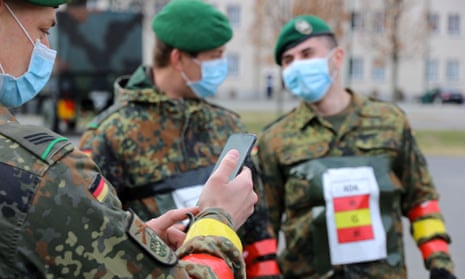On the weekend of March 20-21 news organisations in the US and elsewhere were reporting that beaches in Florida were thronged with holidaymakers, none of whom seemed to be observing any kind of social distancing. “If I get corona, I get corona. At the end of the day, I’m not going to let it stop me from partying,” one reveller told a reporter in Miami, conveying the general atmosphere.
As it happens, however, some people were paying attention – employees of two firms, X-Mode and Tectonix, that specialise in the geo-tracking of smartphones. As rumours began to spread that the US government might be thinking of using tracking to map the spread of the virus, they decided to show what they could do with their technology.
This could have been motivated simply by curiosity. Or maybe they were really pitching for a putative federal contract. Whatever the reason, they produced pretty dramatic results. Both focused on tracking location data from the phones of people who had visited the beach in Fort Lauderdale, Florida – among them the spring-breakers who had made national news when they ignored warnings to practise social distancing despite the worsening pandemic. The results of the tracking, a map posted on Twitter, showed where people went after they visited the beach, spreading out all across the country to major cities including New York and Chicago, possibly bringing the virus with them.
If you wanted a dramatic illustration for non-techies of what this technology can do, then those maps were perfect. Many lay people were doubtless shocked by them. But actually it was old hat, technically speaking: it simply brought into the public sphere what’s already being used to address the pandemic challenge in some countries, and what’s being contemplated by governments everywhere.
The capabilities of this technology would make totalitarian leaders drool. On the other hand, it appears to be very effective in helping countries to manage the crisis. And it is probably not a coincidence that the democratic societies that appear to have coped best – South Korea, Taiwan, Singapore, for example – have evolved from, er, authoritarian pasts. In normal circumstances, liberal democracies would have to think very hard about intruding so comprehensively into their citizens’ privacy.
But these are not normal times, and it seems likely that western governments will move to deploy smartphone tracking as a way of monitoring and controlling the pandemic. When they do there will be an explosion of (understandable) outrage from civil liberties organisations, but governments will ride roughshod over these with reassuring bromides about how such “emergency” measures will be rolled back once the crisis has passed. Recent history (think 9/11) does not provide much comfort here. And we are going to have zoonotic-virus crises for the foreseeable future, so the “war against the virus” will become like the war on terror.
In that sense, we seem to be heading into a nightmarish future. But it doesn’t have to be that way. It all depends on how we design and deploy the tracking capabilities of smartphones. And contrary to what you will hear from government and tech industry sources, there are technologies that will enable us to have the societal benefit (being able to track the virus and keep individuals and authorities informed) while minimising the intrusions on personal privacy. We just have to be smarter.
Broadly speaking, there are three main approaches to harnessing smartphone capabilities. There’s the standard “data grab” model in which the state declares that, due to exceptional circumstances, etc, we have to grab everyone’s location data, centralise and analyse it – all under “legal protections” of course. (Ho ho). Then there’s the variant of data-grabbing, which adds reassuring bromides about how the data will be “anonymised” – conveniently ignoring the technical impossibility of guaranteeing anonymity.
And then there are decentralised models that keep as much sensitive data on users’ phones as possible and uses a centralised server only to enable people to use their own devices to trace contacts. All over the world – at MIT, Cambridge University, King’s College London and a range of European technical universities, for example, groups of gifted researchers have been working on this third approach. Prototypes already exist (I have one on my phone). And what this shows is that privacy-preserving approaches to proximity-tracing are possible, and that countries do not need to accept methods that create risk and enable misuse. Downing Street: are you listening?
What I’m reading
Behind the Johns Hopkins University coronavirus dashboard
Fascinating account on the Nature blog of how a graduate student and his supervisor built the website that now has a billion hits a day. And they did it in hours!
Book review: The Precipice
Scott Alexander’s masterly critique on Slate Star Codex of Toby Ord’s new book, The Precipice.
Good news about Covid-19
Well, there must be some. Interesting post by Robert Wiblin on the 80,000 Hours site.

